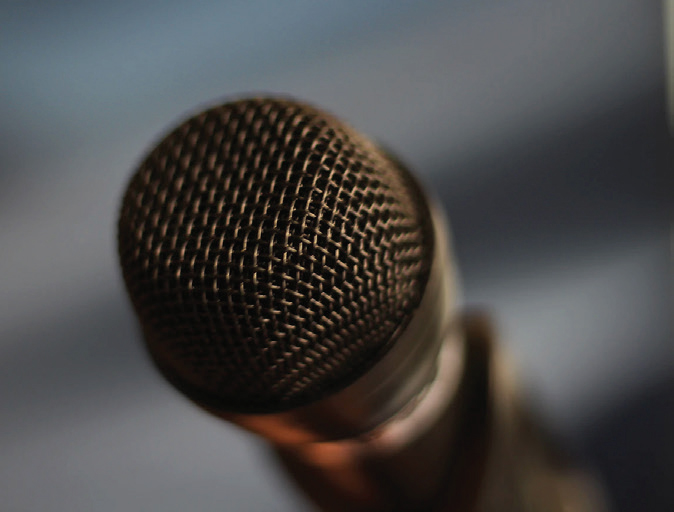
A time difference below about 30 milliseconds (ms) typically causes comb filtering, resulting in a “hollow” sound without much bottom end (so called because when plotted on a linear scale the dips of cancellation resemble the teeth of a comb). Time differences above 30 ms become less noticeable but can have a profound influence on the resultant sound. If the difference between the level of the original single source captured on more than one mic is greater than about 10 dB, then any filtering is unlikely to be audible.
And that’s the secret to minimizing phase issues. We need to make sure that the audio source is picked up by the mic we want to capture it and is only minimally present on any others in the vicinity. There are various ways to achieve this; physical separation (i.e., moving the sound sources further apart) is a great first step, but using the right mic in the right position can go a long way to reducing unwanted spill.
Due to potential phase issues we tend not to use multiple mics on a single source in live work; however, there are two specific circumstances where we often deploy a pair on individual elements of a drum kit.
When I first tried two mics on a kick drum (one inside to capture the “attack” and another outside for the “weight”), I was frustrated by the inconsistency of the results, I would combine the two signals and flip the polarity of one of them, but they didn’t always mesh in a complimentary manner. The problem here is that we’re trying to fix a phase issue with a polarity inversion, which will only work if the two signals are exactly 180 degrees out of phase (but even then the phase shift won’t be equal at all frequencies).
So, I came up with a simple solution that works every time: high-pass the “in” mic. A value around 200 usually does the job but it’s worth experimenting to get the best results.
When using top and bottom mics on a snare drum, things are a bit more straightforward due to the fact that the signal reaching the bottom mic is the reverse polarity of the signal reaching the top one (as the skin oscillates and moves towards the top microphone it moves away from the bottom one). Therefore, the obvious solution is to flip the polarity of the bottom one because it’s the only mic on the kit pointing upwards. If the console doesn’t have this facility, you can always use an incorrectly wired XLR cable (but make sure you clearly mark that it’s reversed).
One of the great things about using dual microphones on kick and snare drums is that it not only provides a better sound but it also enables changing the nature of the sound during the performance – you can go from a “clicky” rock kick sound to a softer jazz sound or a punchy snare sound to a more “rattley” one just by altering the balance of the two mics.
This kind of technique can also be applied to other sound sources. One thing I like doing when working with open back guitar amplifiers is to put a second mic in the back of the amp – flip the polarity of that mic, combine it with the front one and you can get a rounder and more full sound that can be adjusted between the more “trebly” front one and the more “bassy” rear one. You can also not flip the polarity of the rear mic and pan the two opposite each other to create a wider sound. Putting a reverb on the rear mic only can also create an interestingly subtle effect.
And Another Thing…
I have one more tip to share on drum kit miking and it involves the positioning of the overheads. The common practice is to place two capacitor overhead (OH) mics over each side of the kit so that they look even from the front and then pan them wide and add them to the close mics on each drum to create the overall drum kit sound (Figure 3).

However, this creates a center line that goes contrary to the preferred panning for the individual elements; most notably it pulls the snare away from the middle and shifts it to the right of the stereo image. To remedy this situation I always imagine a line that joins the middle tom to the snare drum (which typically also goes through the point at which the beater hits the front skin of the kick drum) and then place the two overheads equidistant from this line (as shown on the right of Figure 3). This means that the overheads now replicate and reinforce the panning with the kick, snare and middle tom in the center of the stereo image and everything else off to either side in a logical manner, which has the added bonus of making the overheads phase coherent.
The only problem I’ve encountered with this method is that house engineers, particularly at festivals, often assume that the mics have moved because it looks wrong to them so they move them to the “normal” position. I address this by explaining what I’m doing to the drummer (who can adjust accordingly) as well as writing a note on my technical riders asking them nicely not to “correct” my unusual overhead mic positioning.
Experience has taught us that certain mics will typically always deliver the desired results if used in the correct manner, but I’d like to close with the point that unobvious mic choices in unique combinations can also yield interesting results, so it’s always a good idea to experiment and try out new things to see if they work.
